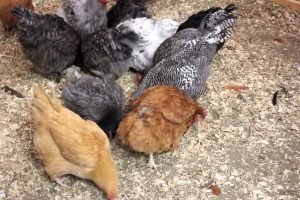 Scripture: Genesis 13-14, 18-19
Scripture: Genesis 13-14, 18-19
Learning Objectives:
- Students will review the story of Abraham and Lot.
- Students will learn Abraham and Lot had flocks of sheep.
- Students will learn the costs, care and benefits of various possible animals to raise to help a family survive.
- Students will participate in an activity to help them determine which animals would be the best for their particular family to raise – providing the most benefits for the least amount of cost and labor.
Guiding Question: How animals would provide the most benefits for your family with the least amount of cost and labor?
Materials: books, websites, information sheets or other materials for students to use for research
Procedure: Review the story of Abraham and Lot. Explain to students how Abraham and Lot raised flocks of animals to provide the materials they need for food, clothing and even housing. Discuss the various animals your students have seen raised by families in their areas. As a class or in small groups have students research how much it costs to purchase each type of animal, any additional costs involved like food and pens fro the animals and what products the animal could provide either on a one time or continuing basis. Once all of the animals have been researched, discuss which animals are the best choices – for a poor family, for a family wanting to sell its products, for a village that pooled its financial resources. Below is a lit of possible animals to suggest students research including the cost if provided by a group like the Heifer Project, possible benefits from the animal and potential additional costs to maintain and care for the animal.
- Sheep – $120 each, can graze on grass (but tends to need a large amount of land to graze), can provide milk, cheese, meat (once only!), wool for clothing, rugs, blankets and tents and hides for tents and saddles (only once), can produce one or two lambs about every 150 days (5 months)
- Goats – $120 each, very similar to sheep except goats are harder to keep in one place and prefer eating brush and vines to grass. They also have a more difficult time giving birth and do not produce as much wool for clothing etc. (varies slightly by breed)
- Flock of baby chicks – $20, can easily die when young, eat grains, seeds and bugs, favorite prey of many predators and must be kept locked in a “chicken coop/house” at night for protection, provide eggs and meat (only once!) and feathers can be used to stuff pillows. Can produce eggs daily once old enough. If the eggs are fertilized and kept warm, chicks will hatch from eggs in approximately 21 days.
- Cows – $500 each, can eat 24 pounds of hay per day, produces large amounts of milk twice a day – three to four total gallons per day (if a female milking cow), cheese and meat (only once!). Hide can be used for a variety of leather products (only once!). Can produce one or two calves about every 274 days.
- Rabbit – $60 each, can eat grass, seeds, etc. Produce meat (only once) and hair can be spun into thread for clothing. Can produce about seven kits (babies) every 28-35 days.
- Dogs – $30 each, can eat table scraps, can be used to herd animals and protect from some predators. No food or other products are usually obtained from dogs.
- Cats – $20 each, eat cat food or table scraps. Kill rodents and other pests. No food or clothing is usually obtained from cats.
- Pigs – $120 each, eat scraps and waste products from fruits and vegetables (slop), can produce about half of its weight in edible products (once!), can produce approximately five litters of pigs in a lifetime. Each litter can have from seven to twenty pigs and the gestation period is about 115 days.
- Llamas – $150 each, eats grasses and grains, used as pack animals to carry goods in difficult places, hair is used to produce clothing, rugs etc. Milk can be drunk and the meat eaten, but is not usually. Gestation period is about a year.
- Three schools of baby fish – $300, can be used for meat, can be used in hydroponics gardening when the fish waste products fertilize plants. Gestation period varies by species. Most minnows should be separated from adults as some species will eat their own minnows if kept together.
Additional Questions:
- Which fruits and vegetables produce the most benefit for the least amount of money and labor?
Supplemental Activity: Have more advanced students research and produce a similar set of recommendations for fruits and vegetables which can be grown in their area. Have them share their findings with others.
